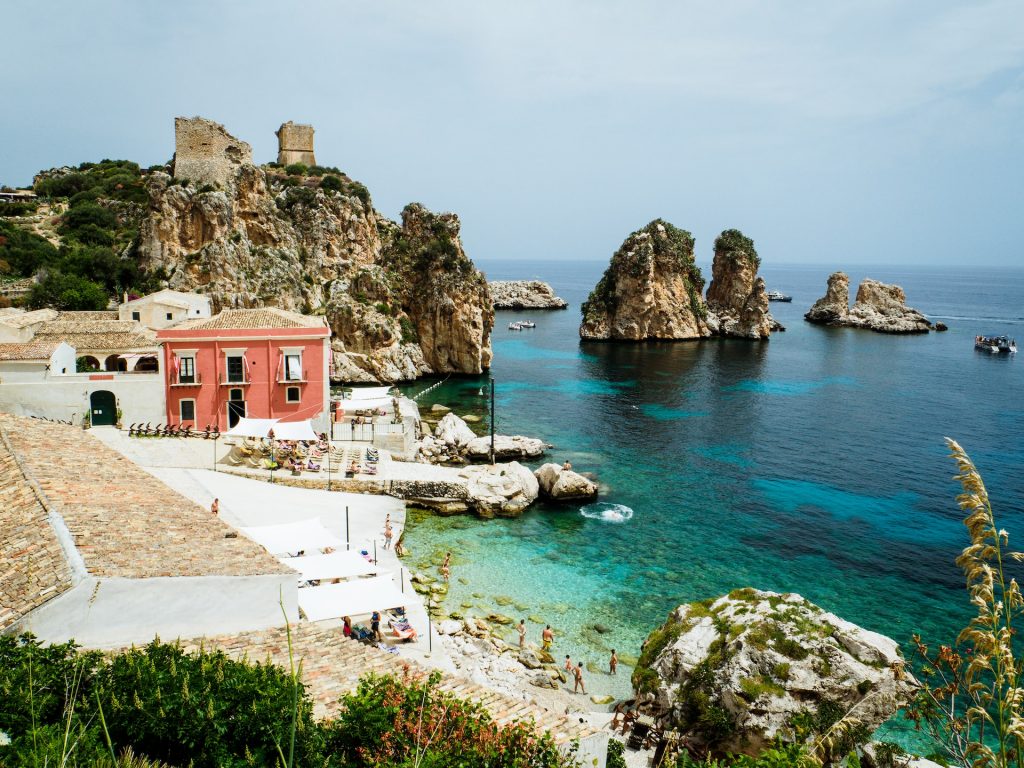Sicilian and Italian: What’s the difference?
4 min read
Sicilian and Italian are two distinct Romance languages spoken in Italy. They both stem from Latin but have undergone different influences throughout the centuries. Sicilian has been influenced by Greek, Arabic, Norman French, and Spanish, while Italian has been mainly influenced by other Romance languages such as French, Occitan, and Sardinian. As a result, the two languages have many differences in vocabulary, grammar, and pronunciation.
The Differences Between Sicilian and Italian
Although both Sicilian and Italian are Romance languages, there are a few key differences between them. For starters, Sicilian has been heavily influenced by both Arabic and Greek, while Italian has been more strongly influenced by Latin. This difference is most evident in the vocabulary; for example, words for numbers, days of the week, and common objects are different in Sicilian than they are in Italian.
Sicilian also has a few sound changes that aren’t present in Italian. For instance, Sicilian has lost the “voiced stops” (sounds like “b” and “g”) that exist in other Romance languages; as a result, words that contain these sounds in Italian are pronounced differently in Sicilian. Additionally, Sicilian has a greater variety of vowel sounds than Italian does.
The grammar of Sicilian is also slightly different from that of Italian. For example, Sicilian uses the pronoun “i” (meaning “he” or “she”) to refer to both masculine and feminine nouns, while Italian uses different pronouns for each gender. Additionally, Sicilian has two different ways of forming the plural of nouns; in Italian, there is just one way to form the plural.
Despite these differences, Sicilian and professional italian translation are still mutually intelligible; that is, speakers of one language can usually understand speakers of the other language. This is likely because both languages are descended from Latin, the language of the Roman Empire. Nevertheless, the differences between Sicilian and Italian can be significant, and they can make communication between speakers of the two languages challenging at times.
A Brief History of Sicilian Language and Culture
The origins of the Sicilian language are shrouded in mystery. It is an Italic dialect, but it also has Greek, Norman French, Catalan, and Arabic influence. This unique blend of influences makes Sicilian one of the most interesting and complex languages in the world.
The first written records of Sicilian date back to the 12th century, but the language likely developed long before that. It is thought that Sicilian originated in a crossroads of cultures in southern Italy. Over time, it became the dominant language in Sicily and spread to other parts of Italy and beyond.
Sicilian has always been a spoken language, but it was not until the 19th century that it began to be written down. In the early 20th century, there was a movement to promote Sicilian as a literary language. This led to the publication of several Sicilian newspapers and books.
In recent years, there has been a renewed interest in Sicilian culture and language. Thanks to the efforts of Sicilian scholars and enthusiasts, the language is now taught in schools and universities. There are also Sicilian radio stations, TV programs, and websites.
Despite these efforts, Sicilian remains a minority language. It is estimated that there are only about 5 million Sicilian speakers in the world. However, this number is growing as more people learn and appreciate the beauty of Sicilian culture and language.
How Sicilian Influenced Modern Italian
The Sicilian language is the dialect of the Italian language spoken by the ethnic Sicilian people. It is also spoken by a minority of people in Southern Calabria (in the province of Reggio di Calabria) and Northern Sardinia (in the province of Sassari). Although Sicilian has been heavily influenced by other languages over the centuries – such as Arabic, Greek, French, and Spanish – it is ultimately derived from Latin.
Sicilian has had a significant impact on the development of Modern Italian. Some scholars believe that Sicilian was the original Italian dialect from which all other regional varieties eventually emerged. This is because Sicily was the first part of Italy to be conquered by the Romans and because Sicilian was the only Italian dialect that continued to be spoken after the fall of the Roman Empire (when Latin began to evolve into the various Romance languages).
One of the most obvious ways in which Sicilian has influenced Modern Italian is in its vocabulary. Many Sicilian words – such as caffè (coffee), mafia, and stiletto – have been borrowed directly into Italian. Other Sicilian words have been indirectly transmitted to Italian via other languages, such as French (e.g. croissant) or Spanish (e.g. guitar).
Sicilian has also contributed to the Italian language in terms of grammar and phonology. For example, Sicilian was the first Italian dialect to develop the use of the article lo, which is now used throughout Italy. Sicilian also helped to standardize the Italian spelling system, and it was responsible for introducing many new words into the language (e.g. cucina, meaning ‘kitchen’).
Conclusion
Sicilian and Italian are two very different languages. Sicilian is more closely related to Greek and Arabic, while Italian is more closely related to French and Spanish. Sicilian has been influenced by many different languages over the years, while Italian has remained relatively unchanged. Sicilian is also spoken in a much more limited area than Italian. Overall, Sicilian is a more complex and interesting language than Italian.



